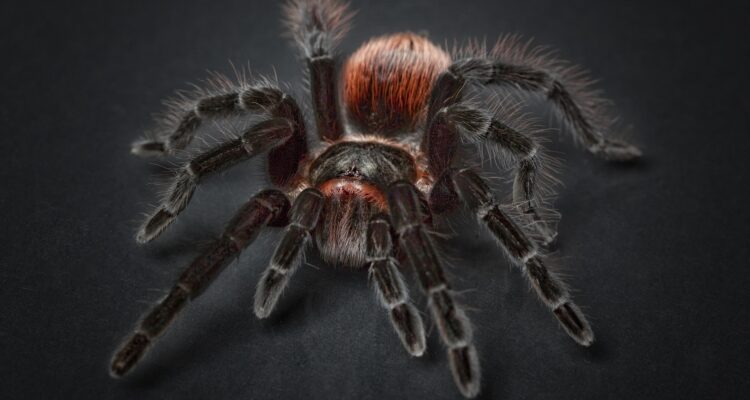
Spiders are blamed for a lot of necrotic skin wounds but the truth is that common house spiders are harmless to humans. Many times the “spider bite” is actually a staphylococcal skin infection. In the U.S. two spiders that can have a nasty bite are the black widow with the red or yellow hourglass on the abdomen (pictured) and the brown recluse with dark violin on the thorax. Scorpions are often feared as much as spiders and snakes but the scorpion’s painful sting is usually self-limited and fatalities are extremely rare.
Widow Spider
The widow spider, predominantly the black widow, is a medium size spider usually 1 to 1 ½ inch adult. It is rarely found indoors and typically encountered in shady spaces outdoors like sheds and patios. Most bites do not result in envenomation but are painful. When systemic envenomation does occur it causes muscle spasms and sweats that starts on the bitten extremity and migrates to the central body. Other symptoms are nausea, racing heart rate, high blood pressure, abdomen or chest pain and restlessness. The symptoms come in waves and it may take up to 72 hours to fully recover. Treatment is directed at the pain and muscle spasms using painkillers and muscle relaxers. Although there is an anti-venom for the black widow, its use is controversial, since it carries the risk of a life-threatening immune reaction and since most widow envenomations are not life-threatening.
Brown Recluse
The brown recluse is mostly found in the U.S. Southwest and Midwest. Many brown armless spiders in other parts of the U.S. like North Florida are misidentified as a recluse. Recluses are typically found indoors in dark, quiet, dry areas and are not aggressive. So they bite when antagonized or cornered, usually when someone rolls over on one or the spider is trapped between the skin and clothes. Bites are single flat lesions without swelling and typically resolve in a week. About 10% of the bites become necrotic black ulcerative lesions that may require surgery. Soap and water and making sure the tetanus boosters are up-to-date is all that is typically needed for most recluse bites except on rare instances when they get infected. Unlike the widow spider there is no antivenom for the recluse – so no controversy.
Scorpion
The Scorpion uses its tail to sting and most stings occur on the extremities while the scorpion is defending itself cornered in a hidden place like a shoe or rock crevice. Stings are immediately painful and cause burning and tingling in a fairly wide area. The sting site is often difficult to identify precisely since the bite site rarely swells or turns red. Muscle twitching may also accompany the pain in the surrounding area. The bark and the striped scorpion found in Southern California, Southwest and the Midwest U.S. are the only scorpions in the U.S. that are associated with severe envenomations characterized by severe muscle spasms and nerve dysfunctions and their stings can lead to life-threatening respiratory arrest and cardiac arrhythmias if enough neurotoxic venom is injected.



